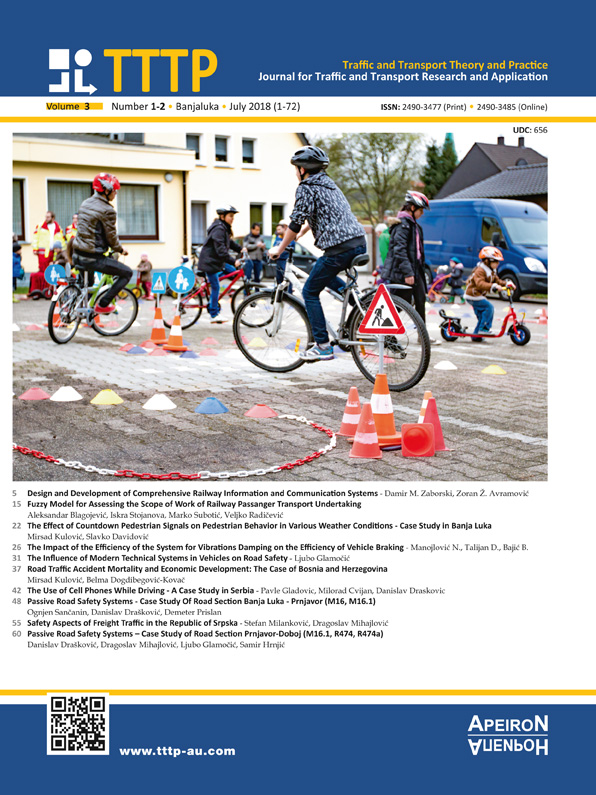The Effect of Countdown Pedestrian Signals on Pedestrian Behavior in Various Weather Conditions - Case Study in Banja Luka
DOI:
https://doi.org/10.7251/JTTTP1801022KAbstract
Pedestrians represent the most vulnerable category of participants in traffic. More and more complex traffic conditions in cities across Europe, and therefore BiH, threaten traffic to become a challenge for pedestrians, and pedestrians often experience traffic as a challenge. Studies of behavior of pedestrians at signalized pedestrian crossings conclude that there is a high level of insecurity and a high percentage of unsafe crossings by pedestrians. Timers that add pedestrian signals indicate the length of the red light, the remaining time to the beginning of the green light for the safe crossing of pedestrians across the street. This paper analyzes the effect of the countdown pedestrian signals - CPSs in different weather conditions, ie the comparison of pedestrian behavior (switching to red light) without CPSs and with CPSs in different weather conditions (sun, snow, rain, no precipitation with a temperature of 0 degrees) was performed. The paper analyzes a traffic light pedestrian crossing over the road that consists of four traffic lanes in Banja Luka, BiH.Downloads
Published
2018-09-05
Issue
Section
Чланци
